Лотус за Белгия
Ромен Грожан:
Spa-Francorchamps. What does this name make you think?
What a fabulous race circuit! Spa as we all know is one of the best tracks we go to, if not the best of them all. As a driver it is like a dream circuit with elevation change, quick corners, medium speed technical corners and some good straights for overtaking. It’s a circuit with a soul. I always enjoy racing here, as do most of the drivers. What I find memorable about Spa is not only the track but also the beautiful surroundings in the Ardennes forest. From the cockpit you get a very real sense of being at a living, breathing track at Spa and the fans are really close to the action. You can almost smell the frites!
How much of a challenge is Spa-Francorchamps as a driver?
It’s a great track as there’s so much to think about over a lap. That’s true if you’re on a qualifying lap trying to maximise your speed at every point, or in a race where you’re either defending or attacking, and maybe both over the course of a lap. It’s the type of place where the differences between cars can be highlighted and sometimes you see a car go really well here – let’s hope that’s our car this season!
What’s the key to a good result at Spa?
You need good grunt from the engine and a well set-up and forgiving car. We can definitely deliver on both those counts so it’s going to be interesting to see how we fare against our rivals. You also need an element of luck sometimes as the weather in the Ardennes can present a challenge.
It’s almost a cliche to talk about the possibility of rain on one part of the track when it’s dry on another, but this can happen. If it happens during qualifying, it’s a massive challenge to make the right call with timing for your lap. If it happens during the race, then the call of when to pit and change your tyres for wet weather ones or back to slicks has a massive impact as it’s a long, long, long lap if you’re at Spa on the wrong rubber.
What memories do you have of the track?
I won in the GP2 Series in 2008 which was a fabulous feeling and I’ve certainly missed the Spa podium since then. I’ve always had good pace but my best result in F1 so far there is P8. I don’t see why we can’t improve on that this year.
How have you been spending the summer shutdown?
Mainly relaxing with my family. It’s great having the shutdown as it’s a valuable time in the season to allow us all to recharge our batteries. We’ve got just two European races left then we’re back to the long-haul and jet-lag so to get this time to relax mentally and physically is very beneficial. My son Sacha celebrated his second birthday and I’ve been able to have a great time with all of my family at the beach so I’m in very good condition heading to Spa.
Talk us through your Hungarian Grand Prix.
The thing about the summer shutdown and the break we get is that when you come back, the last race seems so long ago, even if it was just a few weeks ago. Fortunately we did all our debriefs after the race otherwise I think I’d struggle! It was an interesting race and we worked so well as a team to score a strong result after a poor start and even a penalty. It was quite a memorable race!
Do you think Spa offers a good opportunity for you and the team?
I think the circuit could well play to some of the strengths we have in the car and I’m certainly ready for more points. Me and the team will be doing everything we can to go well and get the strongest result possible, after all that’s what we’re here to do!
Пастор Малдонадо: Spa is a legendary motor racing location. What makes it so special for you the driver?
Where do you start with Spa? It is an amazing circuit and for sure one of the best on the planet. The sensations a driver experiences at corners like the Eau Rouge / Radillon combination, Pouhon and Blanchimont are not like you feel anywhere else in the world. It is unique in every way and to think you are competing on parts of the track that were used back in the first Grand Prix season in 1950 makes it very special indeed.
Is the challenge any different from other race tracks?
Every track has its own challenges. For Spa, it’s a long lap and this can present some set-up challenges. You want low drag for the straights but decent downforce for the corners. This is the same at any track, but with the longer lap at Spa the different requirements are highlighted. Sometimes the best set-up for the fastest lap is not necessarily the best in a race. It’s easier to overtake on the straights, so a car fast here, but maybe relatively slower in the corners could be the preferred race set-up. This year we have a car we know to be very quick in a straight line, so this could help us. Then, of course, you never know if you’re going to get rain at Spa, and when it comes, it can come very quickly. There’s always something to keep you on your toes at Spa.
What are your favourite memories of Spa?
Spa is the type of track where you get great memories whenever or whatever you are racing. But of course the ones that really stick in the mind are the victories and I am lucky that I have won here a few times. I first raced at Spa in 2004 in Formula Renault. In 2006 I won in World Series by Renault at Spa, taking pole, fastest lap and the victory. Then in 2008 I won in the GP2 Series for the first time. Then I took another win in my championship year in 2010 which was a sweet moment. In Formula 1 I qualified sixth in 2012. So all in all I have great memories of the track and feel that I have a special relationship with it going back many years.
What can we say about the Hungarian Grand Prix?
It was a difficult race and certainly not the best result I’ve had. There was so much going on and it was a tough race for many drivers. Like with any race, we had a debrief afterwards and that was productive. I always look ahead so my focus is Spa and the next races ahead.
How did you spend your summer break?
Of course I spent as much time as possible with my family. It’s good to not have any pressure, events or factory visits for a couple of weeks so you can clear your head and prepare for the next nine races. I’ve been training and enjoying the good weather whilst preparing mentally and physically for the rest of the season. Whilst it’s great to have a bit of a break, I can’t wait to jump back into the car.
What’s possible in the second half of the season?
I think we have some tracks coming up which suit our car so that’s a good positive. Certainly, Spa and Monza should be strong for us so good results there will be a great way to reboot our season before we head to all the flyaway races when anything is possible.
Ник Честър: Spa is one of the legendary tracks in the calendar, does it rate among one of your favourites?
Absolutely, it’s a stunning track. It’s a great mixture of high-speed corners that are challenging for the drivers, as well as slower corners, elevation and some good straights as well. It’s a vast track and the unpredictable weather that comes with it often makes it a brilliant race.
What are the performance considerations for a circuit like Spa?
There’s a significant variance between the first and third sectors - where it’s not beneficial to run high downforce thanks to the long straights - and the middle sector, which is a mix of high and medium speed corners where more downforce is needed. It’s a real balancing act between taking wing off to ensure we are quick on the straights and managing the car through the corners where it could easily feel too light due to a lack of downforce. It can make it a little bit difficult to get the best out of the car there but that’s the challenge for Spa and it always makes it interesting from a set-up point of view.
How do you determine how much wing to use?
We tend to do a lot of pre-event studies in simulation to work that out and give ourselves as much of a head-start as possible. We try out varying wing levels and see which are likely to give us the best lap times.
It sounds like it presents a nice challenge from an engineer’s point of view?
It does, it’s a circuit that has to be approached differently to other tracks, which is great. Aside from achieving the best compromise between downforce and straight-line speed, there are a few other aspects of the circuit that present a nice challenge. The famous Eau Rouge, for example, requires respect when setting ride heights for the car. You don’t want to get it wrong through there. It all keeps our engineers nicely busy.
Does the track’s greater length than other circuits have an impact on set-up, strategy and how you approach sessions and the race?
It’s not a factor when setting up the car.
It can have an effect on strategy; although the greater factor there tends to be the type of tyres we have for the Grand Prix. You do have to approach the sessions differently however, as the circuit’s 7.004km means you tend to run fewer laps so it makes it a bit more difficult to get setup work done. It’s the same for everyone though and we manage our programme carefully as always to ensure we can achieve as much as possible in the time that we have.
Does the Mercedes grunt and the E23’s low drag and speed trap prowess give us cause for optimism?
I think so, it’s a strong power track and we have a strong power unit. We have fairly low drag on the E23 so I believe we should be in a reasonable position.
Can you talk us through what happens before, during and after a ‘summer shutdown’.
We’re usually all flat out trying to get everything done before the shutdown begins. During, we can’t do anything technical - there is factory maintenance that can take place but nothing can happen on the technical side. And then afterwards, it’s the mad rush trying to get ready for Spa in just a few days. The ‘during’ part of the shutdown is very good though!
How do you dissect and analyse the performance considerations of a race like the Hungarian Grand Prix?
Looking back, we were pretty happy with our race pace. We had a very mixed up race and could have come further up but in the end we had two undamaged cars and six points. Given how busy this race was, it could have been a lot worse! In terms of analysis, we look at all our lap times in qualifying and in the race and we pull apart how we were performing. We do that at every race, and this one is no different. Sometimes there are a lot of laps which can’t be used for analysis because you were in traffic – you just have to pick the clean laps and look at what you’re doing.
Anything which can be said about our drivers’ performances?
They were both reasonably quick at different stages of the race. Pastor could have had a good finishing position if he hadn’t had the penalties. Romain did have a pretty good finishing position. His pit lane penalty was possibly a little bit harsh but he had a solid result nonetheless.
Федерико Гасталди:
What makes the Belgian Grand Prix at Spa so special?
Simple, the track. The atmosphere is unique as well, but ultimately Spa is all about the challenge that it presents to the drivers. Just watching them attack the classic corners like Eau Rouge and Pouhon is a thrill. It must be amazing to drive this rollercoaster in the forest; it’s like the track reflects the ups and downs of everything in F1. Spa also has a good feeling in the paddock too because everyone is refreshed from the summer break and there is a sense of renewed energy for the rest of the year. We’ve seen so many times over the years the epic races that have played out at Spa; Michael Schumacher making his debut there in 1991, then winning the Grand Prix with us as Benetton the following year, Damon Hill winning Jordan’s first race or our former driver Giancarlo Fisichella coming so very close to winning there in 2009. It’s a great place to be and always delivers a superb spectacle.
Formula 1 definitely seems to go to sleep for a couple of weeks with the summer shutdown: what happens?
It might seems like it goes to sleep for the outside world, but for the personnel who work so many long hours over the season it’s a great concept and one which really helps people get their energy and inspiration levels up. Some people stay at home, but many go away and even party, just as our sport’s reigning champion demonstrated in the Caribbean. We all get our energy levels back up in different ways and it’s certain we’ll all be pushing hard once the factory doors are reopened and the second half of the season is underway. We’ve got nine races over the next three months so there’ll be plenty to keep us busy.
There’s been all manner of speculation about the team in 2015; what’s going on?
This is always part of Formula 1, the rumour, intrigue and speculation. We can expect all kinds of waffle in the Spa paddock but there’s nothing to report from the team; we’re focusing on our racing and we’re hopeful of a strong result in Spa.
How important is it for F1 to race at circuits such as Spa?
In my opinion it is vital. These tracks are the lifeblood of F1. There wouldn’t be a tennis season without Wimbledon or a golf season without the Masters at Augusta. These circuits need to be maintained in F1 because the fans identify with them so much and they nearly always create excitement. I think we have a good balance of tracks in F1. Some traditional like Spa, Silverstone and Monza, some great street circuits like Monaco and Singapore and then newer F1 markets like Russia, the Middle East and the US. F1 should be about variety in every context while at the same time being relevant to partners, fans and teams alike.
What did you say to the drivers before the break and what’s the battle plan looking forward?
After the excitement of the Hungarian Grand Prix everyone was ready for a break! It’s very important for the drivers to have good, strong, positive mind sets for their racing no matter what’s gone on in the first half of the season. Drivers are very good at resetting themselves and getting on with the task of racing, but a longer break away from not just racing but also the factory and other demands helps that little bit more with this. I’m expecting two revitalised chaps to jump back into the cars at Spa and the plan is to push all the way, after all there are still a lot of points up for grabs.


















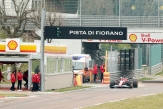
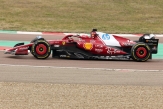
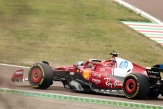

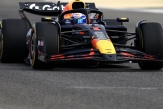
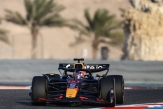
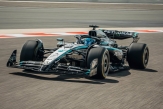
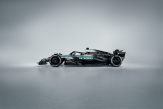
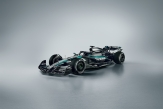
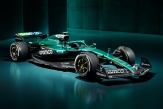
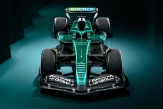
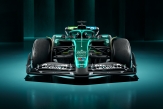
.jpg)
.jpg)
.jpg)
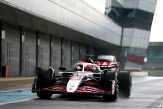
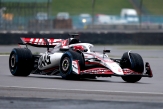
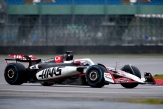
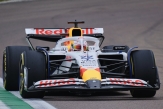
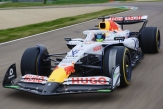
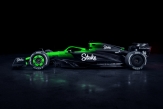
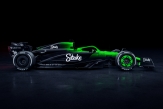

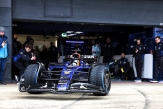
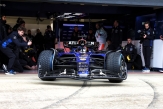
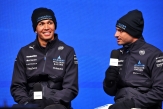

02/12/2025 от Огнян Тенчев (drJeckyll), няма коментари